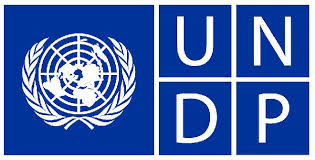Tokyo, 24 July 2014 – Levels in human development continue to rise – yet the pace has slowed for all regions and progress has been highly uneven, according to the latest Human Development Index (HDI) included in the 2014 Human Development Report “Sustaining Human Progress: Reducing Vulnerabilities and Building Resilience”, published today by United Nations Development Programme (UNDP).
The lower human development groups appear to be improving at a higher rate – grounds for optimism that the gap between higher and lower human development groups is narrowing.
Zimbabwe, for example, experienced the biggest improvement in HDI due to a significant increase in life expectancy – 1.8 years from 2012 to 2013, almost quadruple the average global increase.
Meanwhile, the rankings remain unchanged at both ends of the HDI. Norway, Australia, Switzerland, Netherlands and United States remain in the lead for another year, while Sierra Leone, Chad, Central African Republic, Democratic Republic of the Congo and Niger continue to rank bottom of the list.
Despite overall gains in human development, progress in all regions decelerated over 2008-2013 compared to 2000-2008. In the Arab States, Asia and the Pacific region, and Latin America and the Caribbean, average annual growth rate in HDI dropped by about half when comparing these periods.
The steepest declines in HDI values this year occurred in Central African Republic, Libya and Syria, where ongoing conflict contributed to a drop in incomes.
This year’s Report presents HDI values for 187 countries, and is the first index to use the latest International Comparison Program’s conversion rates of national currencies to purchasing power parity, released by the World Bank in May 2014.
Income inequality continues to grow and education remains persistently unequal
The 2014 Report reveals that overall inequality has declined slightly in most regions, as measured by the Inequality-Adjusted Human Development Index (IHDI). This has been driven mainly by improvements in health in recent years.
However, inequality in income has risen in several regions, including among very high human development countries. Despite registering the biggest drop in overall inequality this year, the Latin America and Caribbean region maintains the global high-water mark in income inequality.
And high disparities in education persist. The Report shows that older generations continue to struggle with illiteracy, while younger ones are having difficulty making the leap from primary to secondary schooling. The highest levels of education inequality are found in South Asia, the Arab States and Sub-Saharan Africa.
The IHDI, calculated for 145 countries, shows that the lowest levels of inequality are to be found in Norway, Finland, and Czech Republic.
When ranked by the IHDI, some countries rank lower than when ranked by the HDI.
In United States, Gross National Income (GNI) per capita is higher than in Canada. But when the GNI is adjusted for inequality, the reverse becomes true. Similarly, Botswana, Brazil and Chile have large adjustments to GNI per capita due to high inequality.

